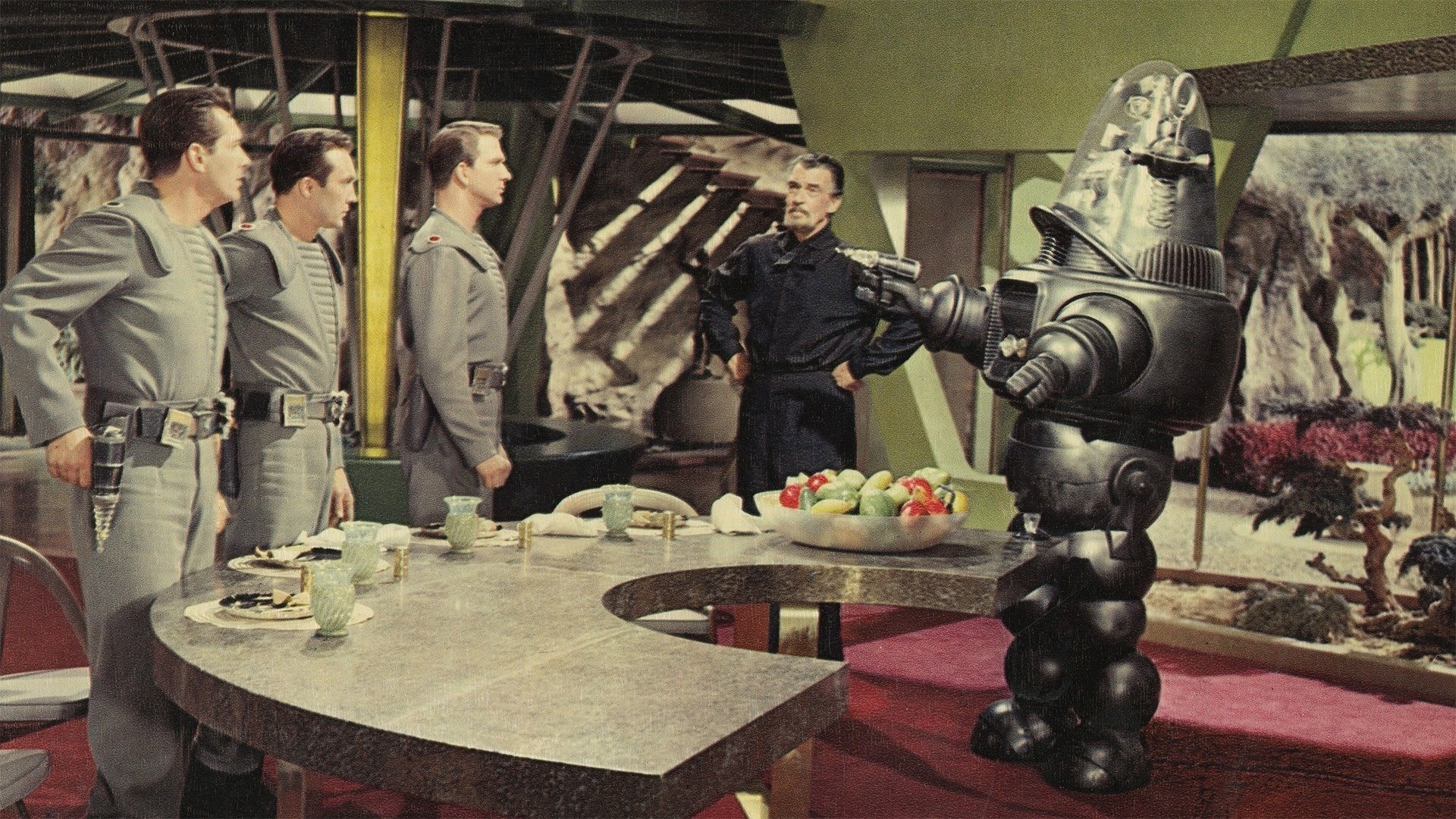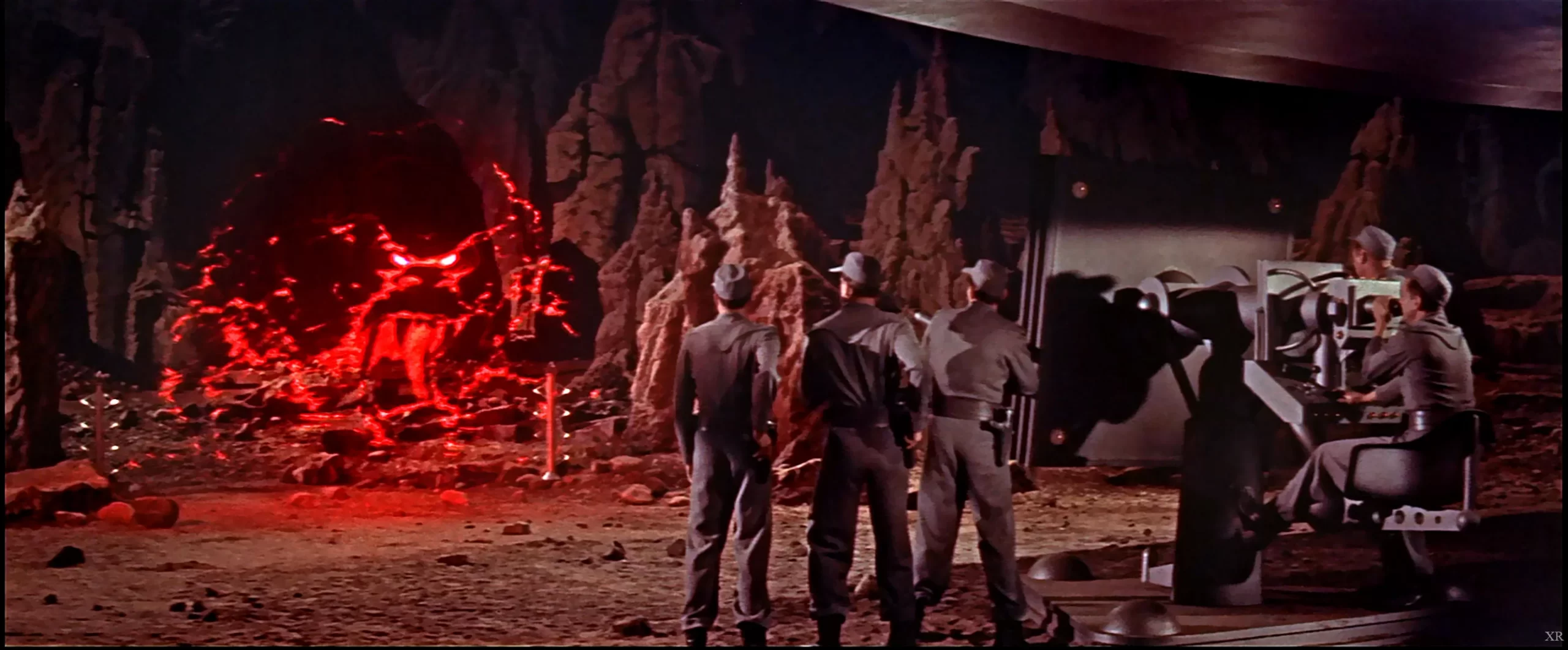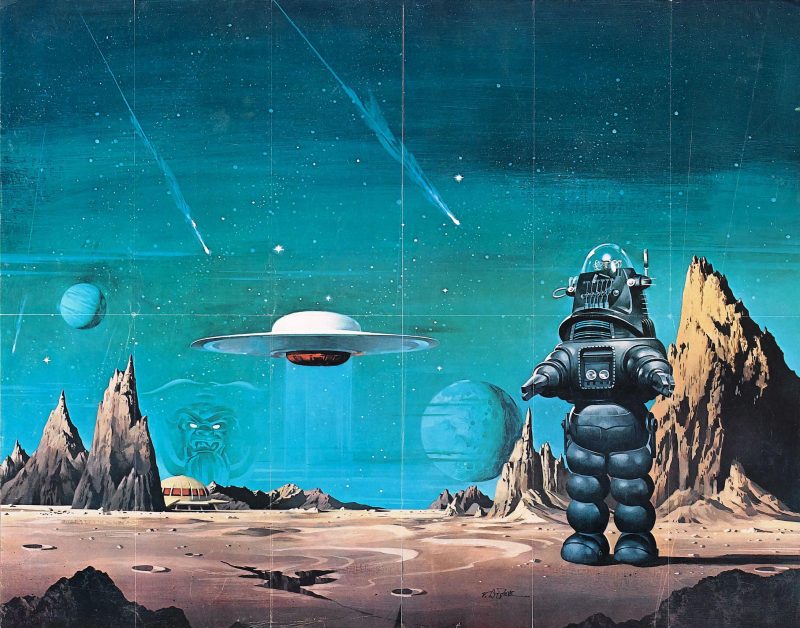The period between 1950 and 1960 can be described as the most vibrant era for Americans in the realm of science fiction. During that time, films featuring encounters with extraterrestrial beings captured the audience’s imagination. This can be attributed in part to the escalating space race between the United States and Russia. UFO researcher and former Federal Agent Ben Hansen, in the documentary “Alien Abduction: Betty and Barney Hill,” contends that the growing UFO fear in the 1940s and 1950s unsettled the government, leading them to treat those who claimed to have seen UFOs as if they were insane. Hollywood also sought to capitalize on this clandestine fear prevalent among the public.
In this frenzy, numerous successful space and alien-themed films were produced. Works such as “Them!,” “The War of the Worlds,” “The Day Earth Stood Still,” and “Invasion of the Body Snatchers” are notable examples of successful sci-fi films that contained political undertones. “Forbidden Planet,” produced in 1956 and directed by Fred M. Wilcox, stands apart from the rest as a unique film. This is because while other films were set on Earth, “Forbidden Planet” is a film where aliens are visited in their own space.

It wouldn’t be an exaggeration to say that “Forbidden Planet” is the progenitor of space films. “Forbidden Planet” is the inspiration behind “Star Trek.” Gene Roddenberry, the creator of “Star Trek,” mentioned that the starting point for his series was a team of explorers traveling to planets with spaceships, much like in “The Forbidden Planet.” Likewise, the film paved the way for the robots in “Star Trek.” While the sci-fi films of the time brought dangerous creatures to Earth, “The Forbidden Planet” explored the universe with ships and technology far beyond its time, much like the “Star Trek” series.
If you have the chance to watch the film, you’ll gain a better understanding of where certain aspects of “Star Wars” originated. Since Georges Méliès took us to the Moon in that legendary film back in 1902, humanity had not revisited space until “Forbidden Planet” brought it back to life. The film, starring Leslie Nielsen, Walter Pidgeon, and Anne Francis, features a diverse crew that you can get to know individually.
Let’s briefly delve into the plot… In the year 2200, Commander John J. Adams, traveling through space with his ship, lands on a planet after receiving a signal. The planet is arid and nearly abandoned, much like Mars. There are only two humans and a robot living on the planet. The mystery of why the planet has become so arid and what has happened to its inhabitants is central to the film.
“Forbidden Planet,” the second feature-length film of Leslie Nielsen, known for his roles in comedy films, played a pivotal role in shaping his career. In his role as a stern captain in the film, Nielsen more than lives up to the character. Anna Francis and Walter Pidgeon accompany Leslie Nielsen in the movie. In the role of a mad scientist, Walter Pidgeon arguably delivers one of the most successful performances of his career, portraying a brilliant but unhinged scientist with immense power. Anna Francis, who plays his daughter, is an innocent young woman who, removed from the conventions of Earth, encounters a man for the first time after her father.
However, the true star of the film is Robby the Robot. Robby, a walking, talking, highly intelligent robot, is considered by many cinema historians as the first and most sophisticated robot to grace the screen. Designed by Robert Kinoshita and constructed by the MGM team, Robby is known for his actions and groundbreaking design. Robby’s fame didn’t end with “Forbidden Planet”; he went on to appear in 25 different films.
If you do not speak English, I am at your disposal with 187 other languages along with their various dialects and sub-tongues.
– Robby the Robbot
“Forbidden Planet” stands as one of MGM’s most opulent and high-budget productions of its time. It encompasses serious design and artistry, requiring elaborate elements such as space landscapes, a spacecraft, an entirely new planet, and a colossal laboratory. Not since “Metropolis” had such a profound and expansive Sci-Fi set been created. Even today, its sheer magnitude can astonish viewers.
This film also marks the earliest and most successful utilization of advanced technology in cinema. Concepts like the ray gun, electromagnetic barrier, and advanced spaceship technology made their cinematic debut in “Forbidden Planet.” The visual effects were meticulously crafted, naturally earning the film a nomination in the Academy Awards’ Best Visual Effects category. However, it faced an unfortunate twist of fate, as it was nominated in the same year as “The Ten Commandments,” a religious film that, predictably, secured the award.
Innovations extend to “Forbidden Planet’s” music as well. It is the pioneering film in which electronic music was first employed in cinema. The unsettling music heard throughout the film was designed by Louis Barron and Bebe Barron. However, due to the duo’s unconventional musical compositions for the time, they were not officially recognized as musicians. Consequently, “Forbidden Planet,” despite achieving a groundbreaking feat, does not credit musicians in its opening credits.

The screenplay for the film, adapted from William Shakespeare’s “The Tempest,” was crafted by Irving Block and Allen Adler, with Cyril Hume contributing to the writing process. In shaping the film, the team aimed to evoke a sense of mystery and curiosity within the audience, leaving them in suspense about the unknown. The film successfully weaves an intricate mystery and, similarly, features a formidable end-of-act creature. However, the uniqueness lies in the fact that this creature, much like the unfathomable depths of space itself, remains invisible. The reason for this is rather simple: the appearance of the creature is left to the viewer’s imagination. The team desired to provide a glimpse of the creature towards the end of the film, and they designed a silhouette reminiscent of 1980s video game monsters.
“Forbidden Planet,” which can be regarded as the precursor to space adventure films, also introduces numerous pioneering elements. Yet, this is no mere coincidence. The team invested meticulous effort into this exceptional film, imbuing each scene with meaning. For instance, the video game monster is said to resemble MGM’s mascot, the lion. Every frame of the film is brimming with craftsmanship, and it continues to hold a significant place in contemporary cinema. If you seek more in-depth information about the film, I’ve included a brief documentary featuring many prominent figures and directors associated with the film below for your reference.

Cast & Crew
director: Fred M. Wilcox
writers: Cyril Hume, Irving Block, Allen Adler, William Shakespeare
starring: Walter Pidgeon, Anne Francis, Leslie Nielsen
USA | 1956 | 98 MINUTES |
